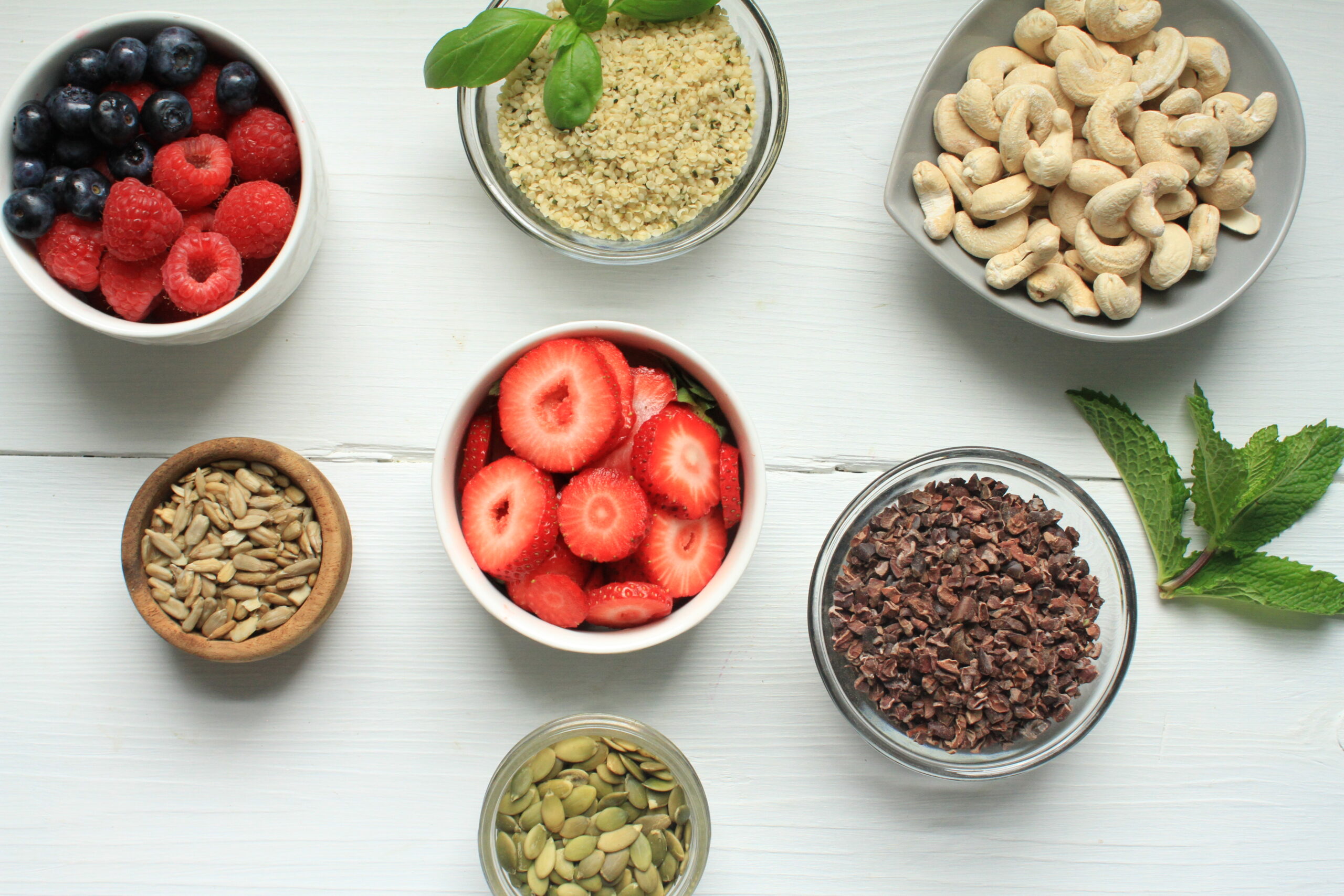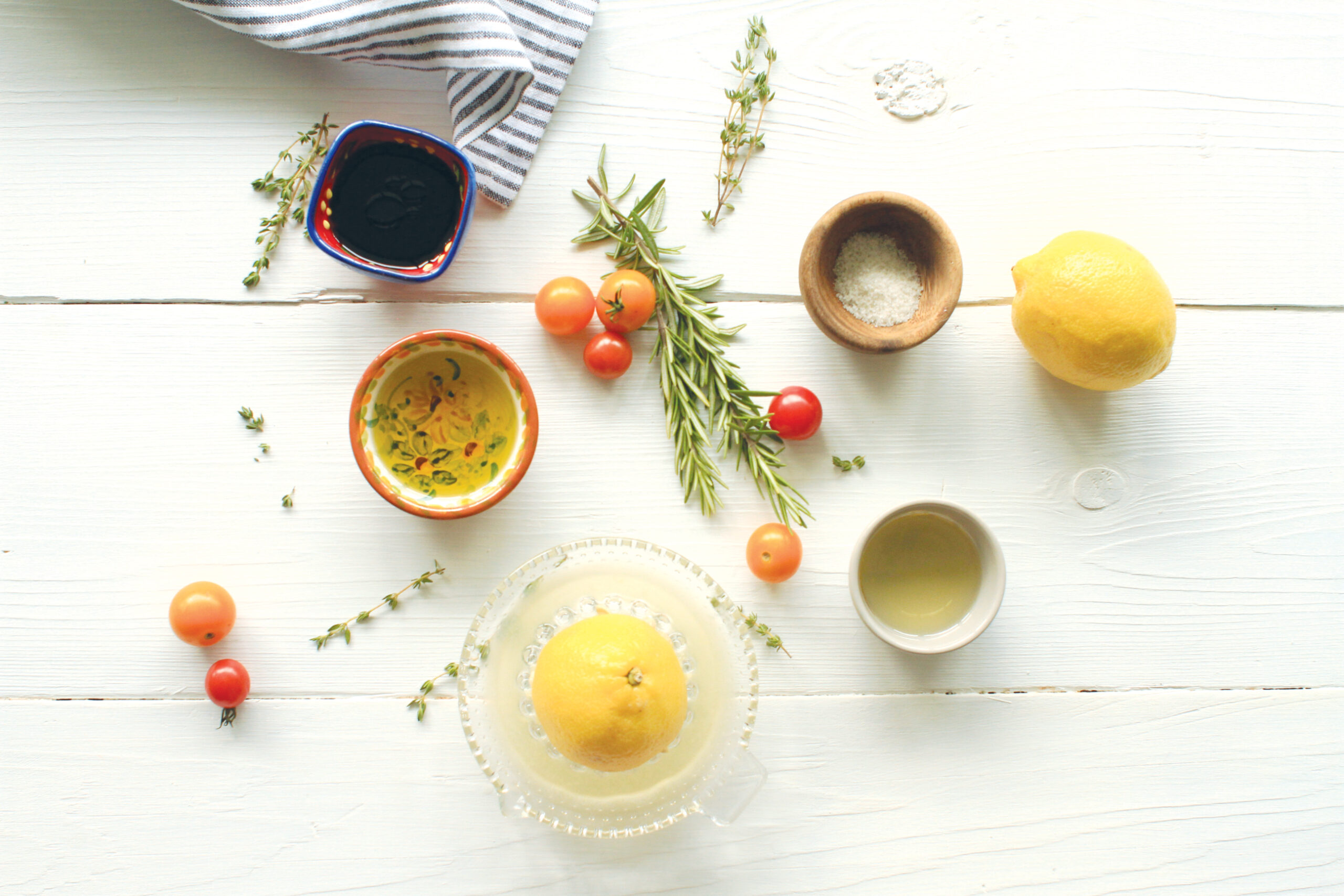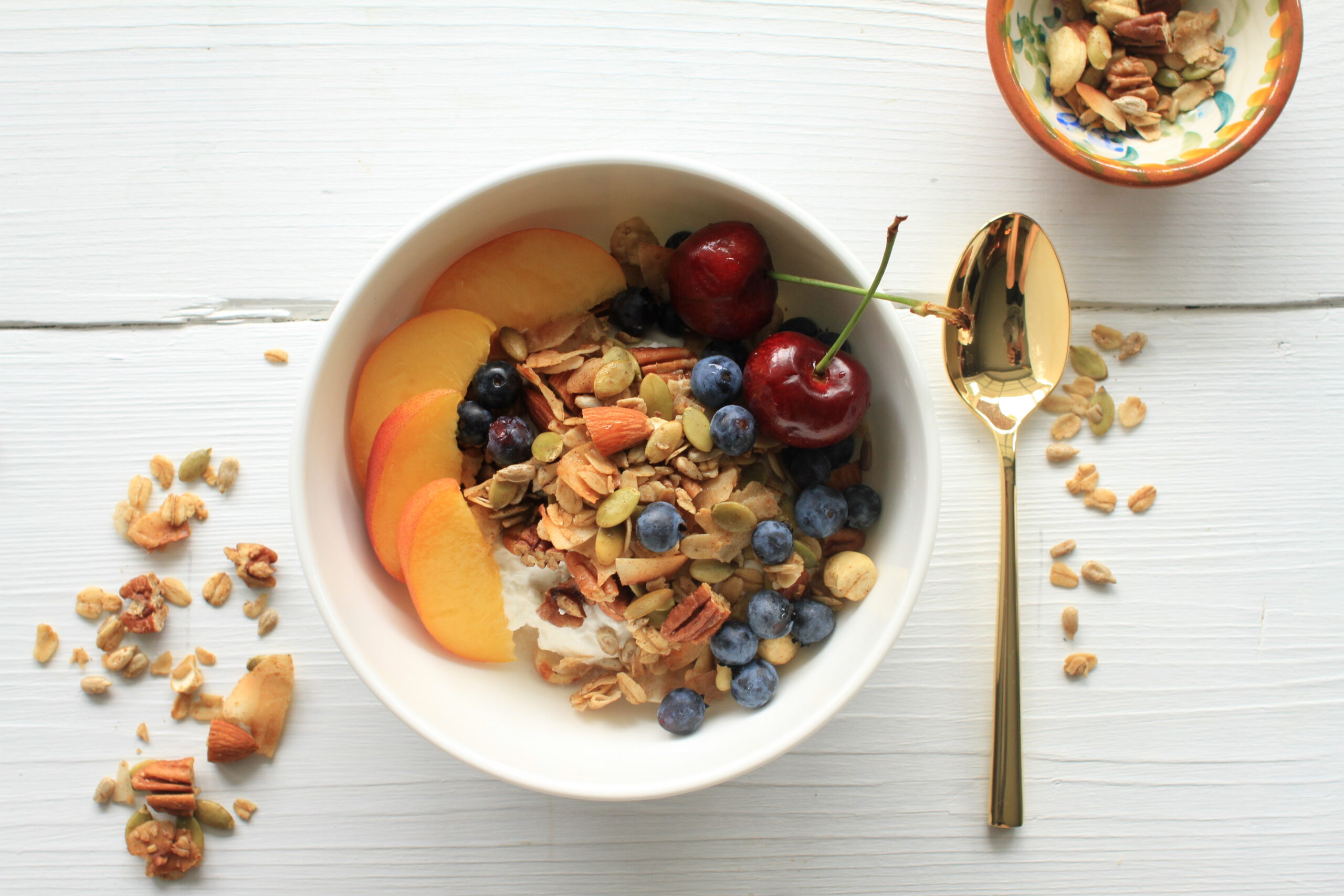As a nutritionist mom one of my top priorities is ensuring that our family eats whole, organic foods on a daily basis. Yes, organic foods can be more expensive but choosing to eat organic is one of the greatest investments you can make in your health and longevity. Think of it as investing in future YOU, the healthy, strong, fit woman you want to be in 10, 20 or 30 years from now! Take a moment to visualize her. Is she able to run up the stairs at Casa Loma? Carry groceries without breaking a sweat? Does she feel better at 50 than she did at 25?! What we consume on a daily basis has a cumulative effect, day after day, year after year. How we age and how we feel on a daily basis is truly up to us.

Why choose to eat certified organic food?
Organic food is healthier for you and the planet. Certified organic farming prohibits the use of: synthetic fertilizers, toxic pesticides, GMOs, growth hormones, and routine antibiotics. Organic farming promotes soil fertility and a healthy farm ecosystem for generations to come. It enhances the health of humans, animals and plants.
Now I realize it can be quite challenging to shop on a budget these days whether you choose to eat organic or not. With rising food costs all of our grocery bills have increased, but there are simple steps that we can take to reduce our bills and get more value (both monetary and nutritional value!) for our money. Here are 15 tips to help you along on this journey, let me know in the comments which tips you’re going to try out!
15 Tips for Eating Healthy and Organic On A Budget:
1. Shop At Your Local Farmer’s Market Or Local Farm
2. Eat seasonally
When you buy foods that are in season they are going to be less expensive than their counterparts. They are also going to be tastier and more nutritious. If you were to buy a half pint of raspberries from the grocery store in the dead of winter not only would it be lacking in taste and nutrition but it would also cost you a small fortune. If you’d like to know what’s in season where you live you can often find an online availability guide for your area. (For Ontario’s availability guide see the Resources section below.)

We currently live in the city of Toronto and one of our favourite family activities is visiting our local farmers’ market or going for a little road trip to visit organic farms. Local, organic foods are the most nutrient dense foods that money can buy. When you shop directly from the farmer you’re able to get the best value for your dollar since you’re cutting out the middle man and the grotesquely marked up food costs at grocery stores these days. The food you buy from a local, organic farm is the freshest you can buy because it didn’t have to travel thousands of kilometres to reach your kitchen table and it wasn’t sprayed with synthetic pesticides. *For our favourite farmer’s markets in the city please see the Resources section at the end of this post.
3. Buy Frozen Produce
If you’d like to have access to organic fruits and veggies all year long then I recommend buying frozen produce. I like to make smoothies and soups throughout the winter months so our freezer is well stocked with frozen kale, cauliflower (a key ingredient for really creamy smoothies), spinach, berries, mango and pineapple. Frozen produce is equally as nutritious as fresh produce so for this reason I recommend you always choose frozen over canned. If you’re buying frozen foods from a grocery store oftentimes they’ll have their own in-house brand that will be less expensive than the competition.
*Pro Tip* Towards the end of summer stock up on fresh local produce from your farmer’s market such as dark leafy greens and berries and freeze them for the coming months to use in soups and smoothies.
4. Grow Your Own Food
If you’re new to gardening and you don’t have any outdoor space, start small with a basil plant or a little herb garden in your windowsill. Herbs are incredibly nutritious and flavourful and a little goes a long way! Even if you aren’t going to grow them yourself, if you were to buy them at your local farmer’s market they’re quite inexpensive and such a great way to bring the wow factor to your meals. If you’re a gardening novice who has ample space for a garden I recommend starting with a tomato plant, kale and a few herbs as these plants are fairly low maintenance and add so much goodness to your meals.
Growing your own food is such a rewarding experience that encourages us to feel connected to what we eat and the environment in which we live. If you have children I highly recommend getting them involved in the gardening process. It will teach them where their food comes from and that it doesn’t just magically appear on grocery store shelves. They will experience the entire growth process from seed to plant. My 6 year old son River is absolutely enthralled with gardening and he takes such pride in caring for our plants. Being a steward of the land has encouraged him to try foods he most likely wouldn’t have if he hadn’t grown them himself.

5. Create A Weekly Meal Plan
Creating a weekly meal plan helps to keep you organized and on budget. It doesn’t have to be super detailed but I find it really helps to jot down a few ideas for dinners for the week ahead and planning on having rollover meals. A rollover meal is when you are intentional about having leftovers that you can repurpose later on. You can get creative with rollover meals and create an entirely different flavour profile using the leftovers. For example we’ll cook an entire roast chicken and then later in the week we’ll make pulled chicken tacos with a lime cilantro dressing and use the leftover bones to make a bone broth. Planning your meals in advance makes you less likely to waste food as well as less likely to pick up takeout at the end of a busy day.
6. Use Grocery Store Apps or Online Flyers
These days most grocery stores have their own apps or online flyers located on their website promoting sale items. A simple way to save a few bucks is to buy what’s on sale and it helps to be flexible with your grocery list when you’re on a budget. It’s also a great idea to compare prices at different grocery stores or farmers markets depending on where you’re getting the bulk of your foods. Thankfully these days a lot of the budget-friendly grocery stores also carry organic foods. We always get our frozen organic fruits and veggies from a budget grocery store in our neighbourhood instead of the organic grocery store which tends to really mark those items up.
7. Eat Small Amounts of High Quality Meat
When it comes to eating meat and dairy I always recommend choosing organic, grass-fed, pastured, and high quality. Since this will definitely increase your food bill you can choose to partially offset the cost by eating a smaller quantity. The key is to eat smaller quantities of a higher quality. This is an imperative choice for long term health and well-being since conventionally farmed meat products are subjected to growth hormones, routine antibiotics, preservatives and GMO feed. No thank you!
8. Choose Inexpensive Cuts
When it comes to quality meats and poultry some cuts of meat are significantly cheaper. Choose ground beef and stewing beef instead of steak. Choose bone-in chicken breast or thighs opposed to skinless and boneless which will cost more as you’re paying the butcher for that service. We most often buy a whole chicken and roast it ourselves. We’ll eat all the parts of the chicken in different meals and then we’ll use the bones to make homemade bone broth. If there is a sale at our butcher we will stock up and freeze what we don’t need.
9. Buy Pastured-Raised, Organic Eggs
Eggs are an affordable and versatile protein source, but not all eggs are created equal. Always choose pastured, organic eggs, ideally from a local farm or farmer’s market. These eggs come from hens that roam outdoors and forage for insects, seeds, and plants, which boosts the nutrient content. Pasture-raised eggs are higher in omega-3s, Vitamin D (great for bones and immunity), and antioxidants like Vitamin E and beta-carotene, all of which support cellular health and reduce inflammation.
10. Buy Whole Foods
In order to stay on track with your health goals don’t be fooled by healthwashing. Healthwashing is a term used to describe companies that use misleading terms and labels on their packaging and marketing materials that make their products look healthier than they actually are. When purchasing processed foods it is essential to read ingredient lists and check for certifications. For example the certified organic label in Canada ensures that the product is 95-100% organic.
A simple rule of thumb is to focus on buying whole organic foods instead of processed ones. Processed foods are not as nutritious as whole foods due to added sugars, sodium, gums and preservatives that are used to make the product more shelf stable. When we choose to make our own homemade granola or nut milk versus buying the store-bought variety we get to determine the quality of all the ingredients that we consume.
Another benefit of choosing whole foods is that they contain vitamins, minerals, and fibre that can help us feel fuller longer and some whole foods also contain gut healthy pre and probiotics. Additionally, processed organic foods are often quite overpriced. When it comes to getting the best value for your dollar and for your health I recommend purchasing whole foods and making your own kitchen staples from scratch.
11. Cook At Home
There’s nothing better for your pocketbook (and for your health!) than cooking at home on a regular basis. It makes a huge difference. It can be really tempting at the end of a busy day to grab takeout on the way home from work but I highly recommend that you stick to your meal plan and that you have those rollover meals in your fridge so you can go home and quickly heat something up.

12. Make Your Own Kitchen Staples
Schedule a block of time on a weekly or bi-weekly basis for making your own healthy kitchen food staples. In our home we make homemade nut milks on a weekly basis since store-bought doesn’t compare in taste or nutritional value. If you’re interested in learning how to make your own nut milk, check out how to make nut milks from scratch here.
Our Healthy Kitchen Staples: homemade granola, bone broth, hummus, guacamole, trail mix, nut butters, and nut milks.
13. Buy In Bulk
From nuts and seeds to flours, beans and legumes, buying in bulk is one of the most economical ways to shop for plant based foods. Since it encourages being more mindful about our buying decisions it also helps to reduce the amount of food waste we tend to accumulate. It’s also better for the planet since you’re eliminating unnecessary packaging and single use plastics by bringing your own cloth bags or refillable containers with you!

14. Make Use of Vegetable Scraps
We’re often quick to toss vegetable scraps into the compost bin but try collecting them in a silicone bag and putting them in the freezer instead. The next time you need a veggie broth you can make your own! Save your onion skins, carrot peels and mushroom stems to make a tasty homemade broth.
It’s amazing how many options there are for vegetable scraps; they can be added to soups, stews and smoothies and sometimes you can consume parts of a vegetable that you don’t even realize, such as beet greens. On your next trip to the farmer’s market add beets to your list and be sure to keep the leafy greens intact. That’s right, beet greens are meant to be eaten! They are packed with nutrition and make a very tasty side dish with a few simple ingredients. Sauté your beet greens in a little olive oil, lemon and a dash of sea salt et voila! You’ve discovered a new recipe that is sure to impress your guests!
15. Prioritize Which Foods You Buy Organic
Only buy organic sometimes. You don’t always have to buy organic. You can prioritize buying organic when it matters most. Check out the Environmental Working Group’s Dirty Dozen and Clean Fifteen annual lists in order to determine which foods you should prioritize. If you want to avoid GMOs, always buy certified organic corn, papaya, summer squash (which includes zucchini) and soy products.
I hope you found these tips helpful! Comment below and let me know which tips resonated with you most. If you’re interested in more healthy lifestyle and motherhood content sign up for my weekly newsletter! You can also find me on YouTube and Instagram @MoniqueLahey. See below for a round up of resources that will empower you to live your best life ever!
Resources:
EWG’s 2023 Dirty Dozen:
https://www.ewg.org/foodnews/dirty-dozen.php
EWG’s 2023 Clean 15:
https://www.ewg.org/foodnews/clean-fifteen.php
Our Top Picks for Farmer’s Markets in Toronto:
Evergreen Brick Works Farmer’s Market – boasts beautiful natural surroundings in the heart of Toronto’s ravine system. You’ll find yourself steps away from trails, ponds, and a children’s garden with free weekend programming making this market a must-visit! Open year round rain or shine. Saturdays 9am to 1pm.
Sorauren Farmer’s Market – a true neighbourhood gem. The next time you’re in the Roncesvalles area be sure to stop by Sorauren park to experience the best community market vibes the city has to offer. Open year round rain or shine. Mondays 3pm to 7pm.
Dufferin Grove Organic Farmer’s Market – as the name suggests there is an abundance of local, organic food at this market along with family-friendly community attractions including; live music, an old school playground and wading pool and to every child’s delight a large mud pit with shovels and running water for hours of outdoor play adventures. Open year round rain or shine. Thursdays 3pm to 7pm.
Ontario’s Availability Guide: https://www.ontario.ca/foodland/page/availability-guide.
